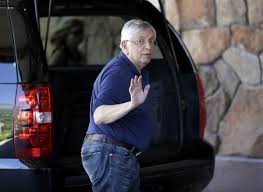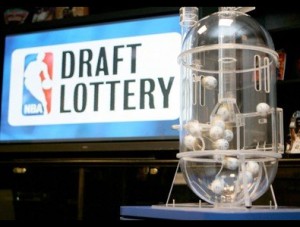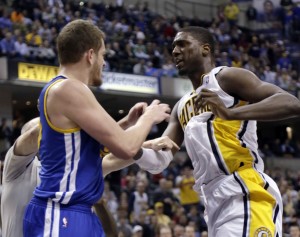 Adam Silver is in a tough spot.
Adam Silver is in a tough spot.
Silver became the NBA’s fifth commissioner on Saturday. He follows David Stern, whose 30 years as the league’s top executive likely will be unmatched by anyone in any sport.
Silver begins his term without facing a major problem that needs immediate fixing or a hot-button issue that requires immediate attention. With TV contracts running through 2016, labor peace assured until at least 2017 and most of the top stars in their 20s, the NBA is not unlike a car in one of those 24-hour rallies.
The engine is humming, and the car has been running at or near the front of the pack for the entire race. And as Stern gets out of the driver’s seat, he hands Silver the keys and says as encouragingly as possible, “Don’t crash.”
In addition to having a kind side – six years ago, he fielded and thoughtfully responded to an email from someone he didn’t know personally who badly wanted to make the move with the league’s digital operation from Secaucus to Atlanta – Silver also is smart enough to know that if it ain’t broke, don’t fix it.
But that doesn’t mean he can’t tweak it.
With that in mind, here are a handful of possible changes that have been bouncing around in my addled brain for some time. Just think of this column as another email, Adam.
1. A technical foul also counts as a personal foul. When I first started watching the NBA four decades ago, only the stars questioned a referee’s authority. Nowadays, scrubs who don’t get off the bench are calling out the refs.
This is not to say that NBA referees should have unquestioned autonomy; with the advent and increased use of replay, they clearly don’t. And we are not looking to replicate what exists in baseball, where every umpire appears to have the patience and understanding of Joey Crawford. There should be some respectful give and take.
However, there is way too much chirping and demonstrative behavior directed from players toward referees. If a player knew that a 12-letter magic word or a sprint downcourt in mock disbelief not only would produce a point for the other team and a $1,000 debit from his check but also could mean a seat on the bench with a third foul midway through the second quarter, he might bite his tongue more often.
Adopt the rule used in most high school leagues and treat techs like offensive fouls. It keeps the players playing instead of talking.
2. Adjust the draft lottery odds to discourage tanking. When the lottery was first introduced in 1985, it had seven teams with placards in envelopes, and the seventh-worst team had the same chance – 14.3 percent – of winning as the worst team.
 There have been several needed adjustments throughout the years, but by and large they have marginalized the better teams while not proportionally helping the worse teams. For example, the NBA’s fourth-worst team has an 11.9 percent chance – slightly below 1 in 8 – of getting the top pick. Meanwhile, the worst team has a 75 percent chance of not getting the first pick.
There have been several needed adjustments throughout the years, but by and large they have marginalized the better teams while not proportionally helping the worse teams. For example, the NBA’s fourth-worst team has an 11.9 percent chance – slightly below 1 in 8 – of getting the top pick. Meanwhile, the worst team has a 75 percent chance of not getting the first pick.
Changes are needed at the top. The worst team should have at least a 50 percent chance – and probably higher – of receiving the top pick. The second-worst team should not have a 1-in-5 chance (19.9 percent) of getting the top pick. The sixth-worst team should have nowhere near a 1-in-16 chance (6.3 percent) of selecting first.
Marginalize the middle. Over the long term, it will minimize the massive deconstruction projects that we see all over the league this season. And if you think tanking is evident now, wait until March and April.
And there is another way to discourage teams from tanking.
3. Change the playoff format. Neither of these ideas is original, but both are intriguing.
First, get rid of the conferences for formatting purposes. If there is a need to retain weighted schedules and geographical rivalries, that is fine. But the teams with the top 14 records receive playoff berths, regardless of conference affiliation.
Now take the bottom 16 teams and create a four-round bracket similar to the NCAA Tournament to be played over five (or six) days. Seed the teams best to worst so the first round will have 30 playing at 15, 29 playing at 16 and so on. That generates excitement, exposure and – most importantly – potential postseason revenue for even the worst teams.
Do not reseed the tournament after each round. The reward for the better teams simply will be home games. Once eliminated, teams would revert to draft position by record – just as they do now – to further disincentivize tanking.
The final game will be somewhat anticlimactic because both teams will have secured the final two berths in the 16-team bracket. But the winner of that game would be slotted 15th and avoid the top overall seed.
Now move on to best-of-seven series, again without reseeding after each round. If a 15 seed can beat a 2 seed four times over seven games, its reward should be facing the winner of the 7-10 matchup, not another gauntlet against the top seed.
Could this mean that two teams from the same conference play in the NBA Finals? Yes, and that is the beauty of best-of-seven series that devotees of college basketball conveniently overlook: The best team virtually always wins. Don’t you want to see the two best teams play for the championship?
Could this also mean that in both the tournament and series formats that teams separated by several time zones will be playing each other? Yes. Big deal. Teams either have their own planes or travel by private charter and stay in four-star hotels. The series format – particularly the first round – is always spaced with plenty of days off. And if you’re wondering about distance, consider that Seattle and Orlando once played a home-and-home series.
4. Make the court bigger. The NBA court has always been 94 feet long by 50 feet wide, even though the  players have dramatically increased in size, speed and length.
players have dramatically increased in size, speed and length.
Here’s how dramatic: In 1968, Wes Unseld was the NBA MVP. He was 6-7 and 245 pounds and played center. Last season, LeBron James was the NBA MVP. He is 6-8 and 250 pounds and pretty much plays point guard.
Or consider this: During the 1999 Finals, which followed a lockout season that by all statistical and aesthetic measures was the ugliest in NBA history, changes were being explored by the Rules Committee. Knicks coach Jeff Van Gundy’s suggestion was to widen the court. That was a generation ago.
The court needs to be 100 feet by 54 feet – six feet longer and four feet wider. One foot of length should be added behind the basket, increasing the distance between the baseline and backboard to five feet and cutting down on all the out-of-bounds activity that takes place there.
The width increase would be more impactful. Players spotting up for corner threes would no longer have to walk the tightrope between the arc and the sideline. The additional four feet of width would stretch the defense, create bigger driving lanes and give post players more room to catch the ball and operate.
The drawback is money. Increasing the size of the court changes the hardwood footprint on the arena floor and would reduce the number of expensive seats that provide a fan experience unique to the NBA, to say nothing of the lost revenue owners will be moaning about.
And that’s the billion-dollar question that Silver needs to put to the 30 men he works for. Players are only going to get bigger, faster and longer. Do owners truly care about the long-term appeal of their game? Or do they only care about money?
TRIVIA: Andre Drummond leads the Eastern Conference in double-doubles. Who is second? Answer below.